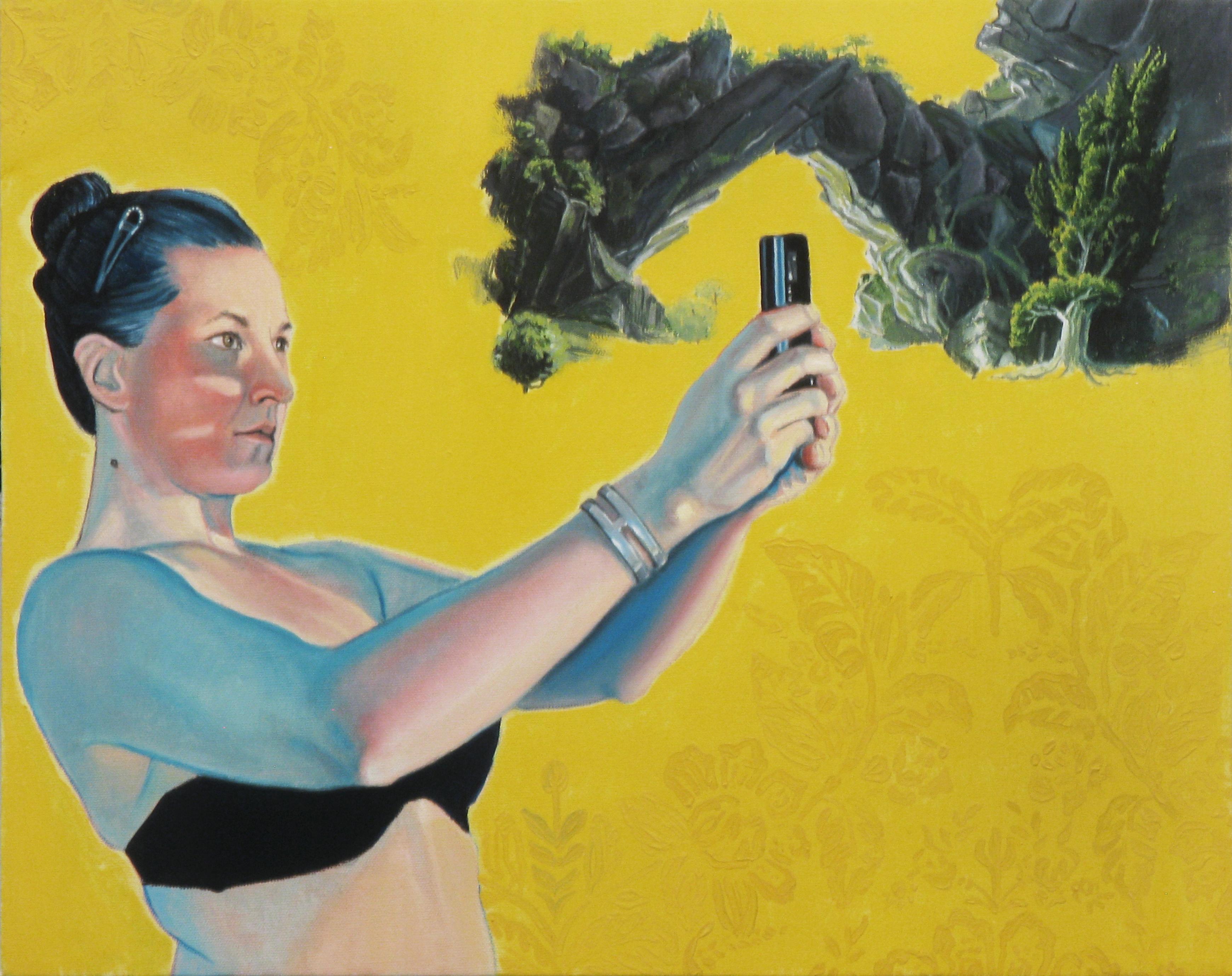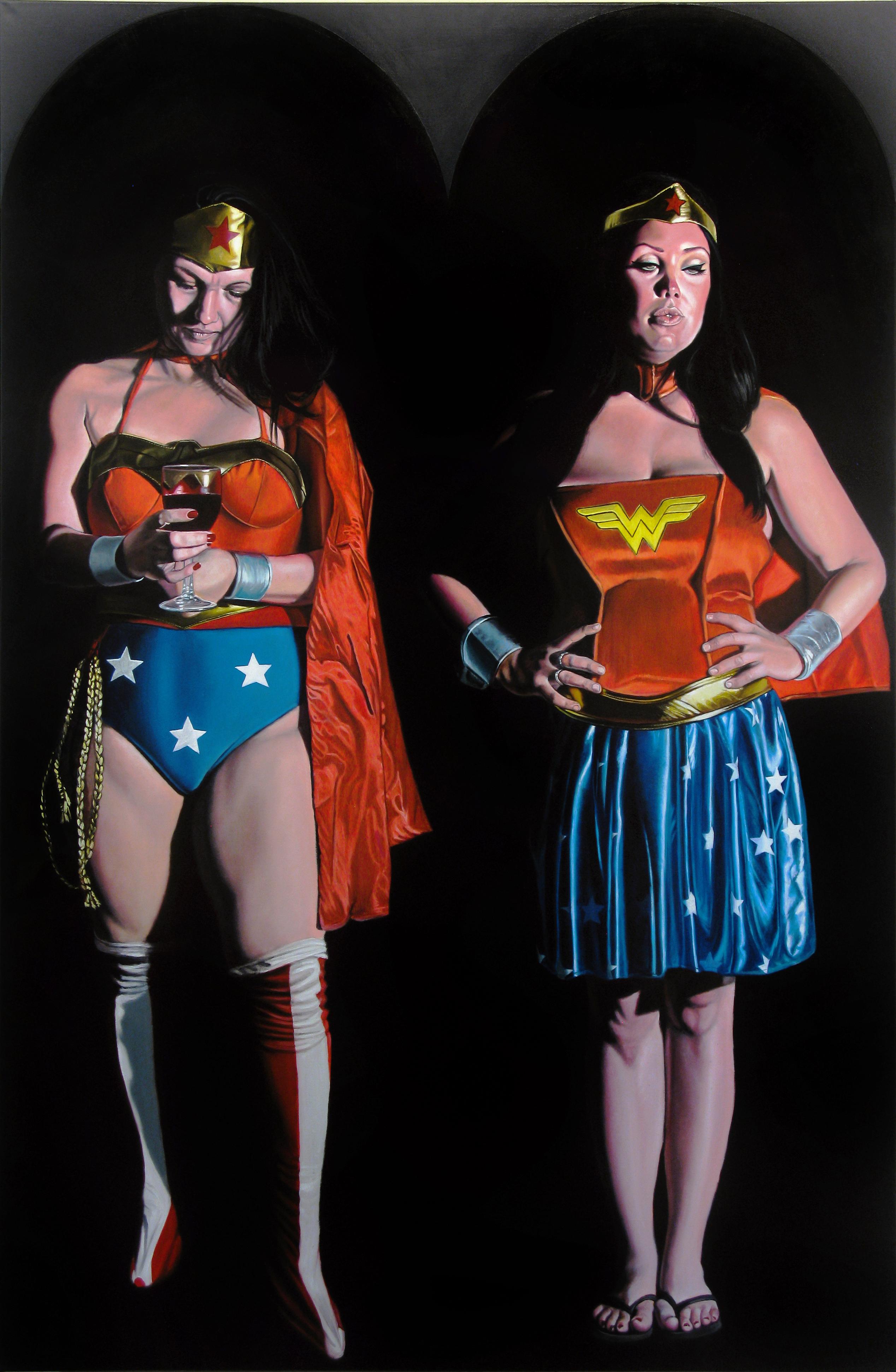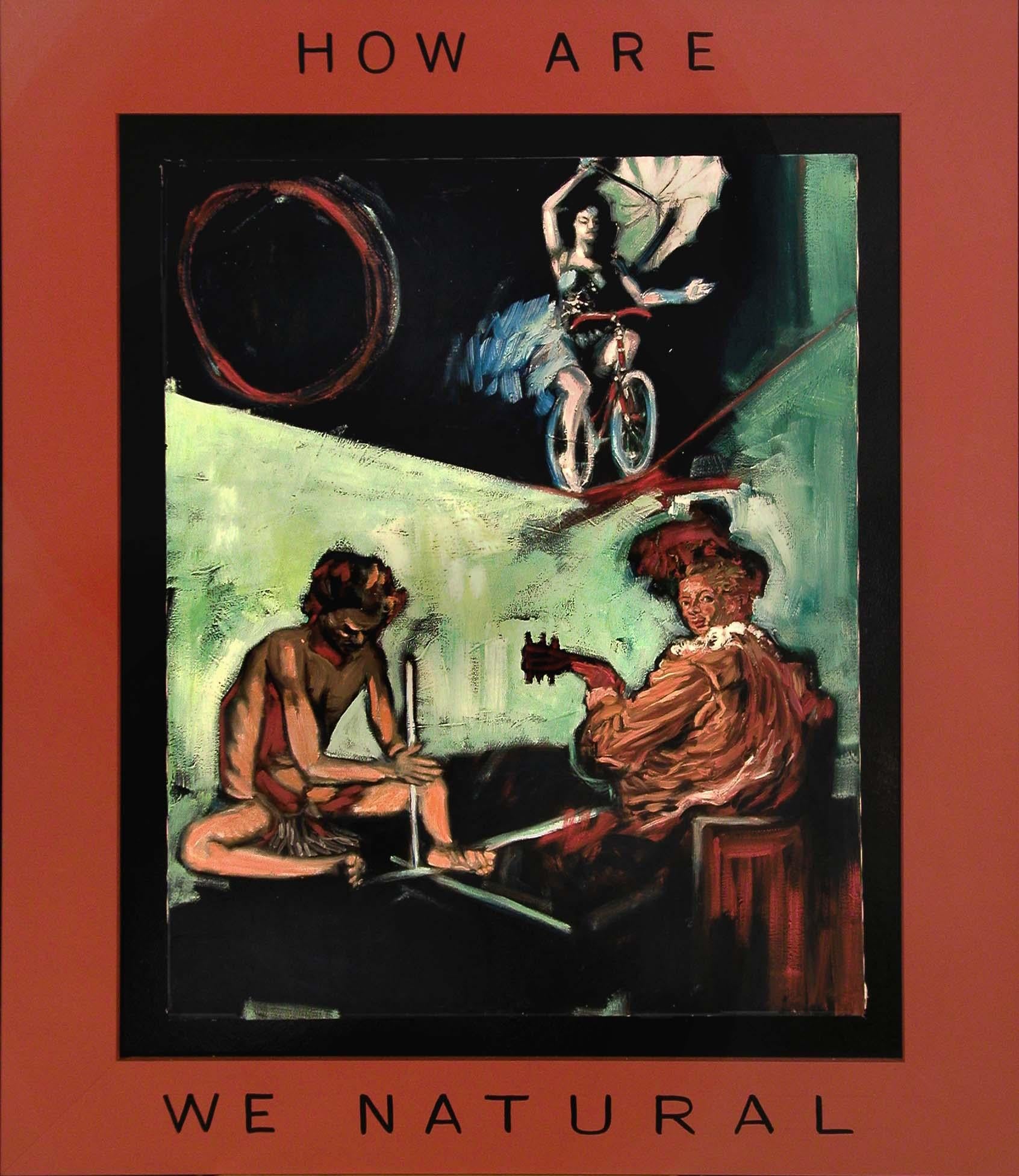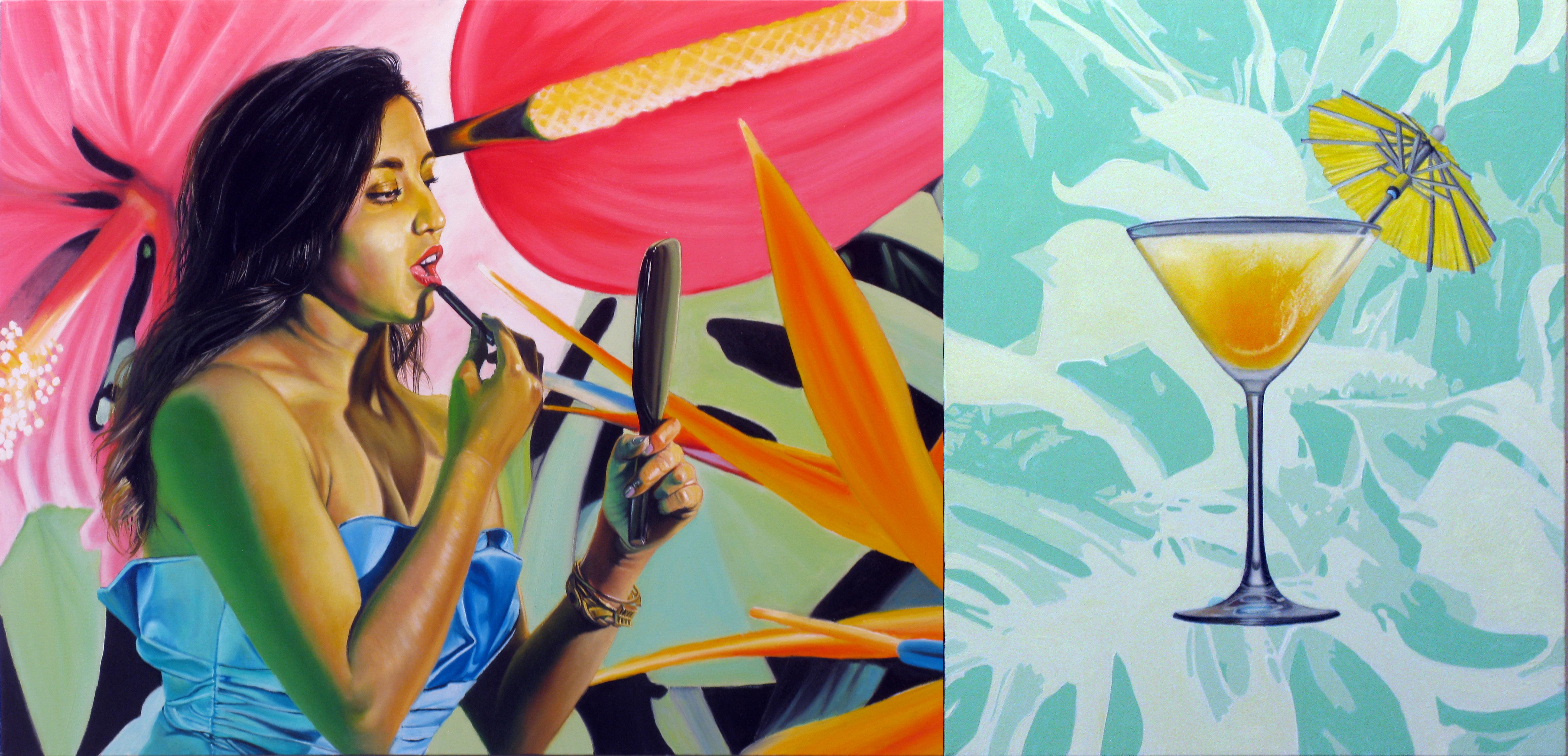Items Similar to Portrait of George Hopkinson - British 20's male oil painting Russian Jewish art
Want more images or videos?
Request additional images or videos from the seller
1 of 12
Jacob KramerPortrait of George Hopkinson - British 20's male oil painting Russian Jewish artCirca 1920
Circa 1920
About the Item
This superb portrait oil painting is by noted Russian Jewish artist Jacob Kramer. The sitter is a friend of the artist, George Hopkinson, proud Yorkshireman and textile businessman who was a director of a West Riding textile company. It is a profile head and shoulders portrait, Hopkinson wearing a suit and white shirt. As well as a businessman he was a patron of the arts and local artists and had a sizable collection of paintings himself. We also have a preparatory sketch for this painting, being sold separately. A superb example of Kramer's work.
Condition. Oil on canvas, 24 inches by 20 inches and in good condition.
Provenance. Family estate of the artist.
Frame. Housed in a complementary frame, 31 inches by 27 inches and in good condition.
Jacob Kramer (1892-1962) was born in the small town of Klintsy in 1892, then part of the Russian Empire, into an artistic middle class Jewish family. His father, Max, was a painter who had studied at the St Petersburg Fine Art Academy under Ilya Repin, and had become a court painter to Baron Ginsburg. Kramer's mother, Cecilia, was also artistic being a trained singer who was well known for touring a regional network of theatres established by her father, at which she performed traditional Slavic and Hebrew folk songs. Following the accession of Tsar Nicholas II in 1894 a new virulent anti-semitic policy was introduced to force Russian Jews either to assimilate or leave the country. The Kramers chose the latter, and left Russia in 1900, emigrating to England where they settled in the Northern industrial city of Leeds. Here they lived in poverty, with Max Kramer taking work as a photographer's assistant. The Kramers had four more children born in Leeds, the oldest of whom, Sarah, later married the artist William Roberts. In 1902, aged only ten, Kramer ran away from his new home in Leeds, taking various jobs in different parts of the north of England, and even going away to sea for six months. During this sojourn away from his family, Kramer attended occasional art classes, but his first formal art education was at Leeds School of Art which he attend from 1907 till 1913. During this time he was also to become involved in the radical modernist organisation the Leeds Arts Club, which introduced him to the ideas of expressionist artists, such as Wassily Kandinsky and the spiritualist beliefs that came to underpin his work. Writing to his close friend and fellow Arts Club member Herbert Read in 1918, Kramer stated that when he looked at an object he saw both its physical appearance and its spiritual manifestation. His struggle, he claimed, was to escape the physical appearance and only paint the spiritual form. Such ideas came straight from the expressionist and Theosophical spiritualism that dominated the Leeds Arts Club, and show clearly that Kramer was himself an English Expressionist artist. With a scholarship from the Jewish Educational Aid Society, Kramer was able to study at the Slade School of Art from 1913 to 1914. Here be befriended other leading artists of the day, including Augustus John, David Bomberg and William Roberts. He was involved in the Vorticist movement led by Roberts and Wyndham Lewis, although he was never really a follower of the style. Nonetheless, several of his woodcuts did appear in the Vorticist literary magazine Blast, and other periodicals including Colour, Rhythm and Art and Letters. In London, Kramer rapidly became well known in the hedonistic artistic circles that dominated before the First World War and was to be seen frequently at well-known artistic haunts, including the cabaret-club The vae of the Golden Calf, The Cafe Royal and The Tour Eiffel. In the early 1920s Kramer returned to Leeds where he became something of a local artistic celebrity. After the collapse of the Leeds Arts Club in 1923 he had numerous schemes to establish a new artistic meeting place in the city, almost all of which came to nothing. The great exception to this was the informal gathering called the Yorkshire Luncheon Club, which met regularly at Whitelock's public house in Leeds, and invited some of the leading cultural figures of the 1930s, 40s and 50s to Leeds to speak. For the most part, however, Kramer's return to Leeds was not a triumph, and he lived in utter poverty and alcoholism, often producing poor quality portraits of local figures to pay for his drinks. None of this later work does justice to the startling quality and originality of Kramer's earlier work, including paintings such as The Day of Atonement, The Talmudists, The Jew, Mother and Child, and the 1922 abstract expressionist painting Musical Theme. His friend Jacob Epstein made a bust of him, copies of which can be found in the Tate in London and at Leeds City Art Gallery. The Tate, the Victoria & Albert Museum and the British Museum all hold examples of Kramer's work, but the most extensive collections can be found in Leeds at the Leeds City Art Gallery and Leeds University Art Gallery.
The standard work on the artist is now David Manson, Jacob Kramer: Creativity and Loss (Bristol: Sansom, 2006).
- Creator:Jacob Kramer (1892 - 1962, Ukrainian)
- Creation Year:Circa 1920
- Dimensions:Height: 31 in (78.74 cm)Width: 27 in (68.58 cm)Depth: 2 in (5.08 cm)
- Medium:
- Movement & Style:
- Period:
- Condition:
- Gallery Location:London, GB
- Reference Number:1stDibs: LU853113173612
About the Seller
5.0
Platinum Seller
These expertly vetted sellers are 1stDibs' most experienced sellers and are rated highest by our customers.
1stDibs seller since 2018
398 sales on 1stDibs
Typical response time: <1 hour
- ShippingRetrieving quote...Ships From: London, United Kingdom
- Return PolicyA return for this item may be initiated within 14 days of delivery.
More From This SellerView All
- Race Horse Phoenix with Guilermo Kemmis - British 19th century art oil paintingLocated in London, GBThis superb British 19th century equine oil painting is by noted horse lover, George Gascoyne. Painted in 1889, this French born chestnut horse is Phoenix. While he was essentially a...Category
1880s Realist Animal Paintings
MaterialsOil
- Man Reading Newspaper - Orientalist art 19th century portrait oil paintingLocated in London, GBThis striking large Orientalist oil portrait painting is by a talented Turkish School artist from the late 19th century. The portrait is extremely well painted, dating to circa 1890 ...Category
19th Century Realist Portrait Paintings
MaterialsOil
- Portrait of a Girl with Hat - Scottish 1919 art oil painting Edinburgh artistLocated in London, GBThis Lovely Scottish portrait oil painting is by noted portrait artist James Bell Anderson who worked out of his studio in Glasgow. It was painted in 1919 and is signed and dated. It...Category
1910s Realist Portrait Paintings
MaterialsOil
- The School Room - Flemish 19th century art interior genre oil painting childrenBy Ferdinand de Braekeleer the ElderLocated in London, GBThis charming Flemish genre oil painting is attributed to Ferdinand de Braekeleer the Elder. Painted circa 1850 it is a fine realist genre scene of the interior of a school room, a t...Category
19th Century Realist Interior Paintings
MaterialsOil
- Fishermen Sailors at Sea - Scottish Victorian art marine portrait oil paintingBy Patrick William OrrLocated in London, GBThis charming Scottish Victorian oil painting is by noted Scottish artist Patrick William Orr. Painted circa 1880, this marine portrait is of two fishermen sailors at sea, sorting th...Category
19th Century Realist Portrait Paintings
MaterialsOil
- Portrait of a Lady with Pendant - British Art Deco 30's portrait oil paintingLocated in London, GBThis gorgeous Art Deco portrait oil painting is by British female artist Elsie March. Elsie was one of 9 siblings, eight of whom became artists. Although Elsie later went on to focus...Category
1930s Realist Portrait Paintings
MaterialsOil
You May Also Like
- 19th century portrait military officer 5th Royal Lancashire Militia, East LancsLocated in York, GBA fine 19th century oil on canvas portrait stated to be Captain Paul John Henry Butler, 5th Royal Lancashire Militia, half length, wearing breast star. Hou...Category
19th Century Realist Portrait Paintings
MaterialsOil
- Oil Painting / Photorealism / Figurative Art / Human Figure /MuseumBy Bruce AdamsLocated in Buffalo, NYBruce Adams was a painter, art educator, and writer. Born in Buffalo, N.Y., in 1952, he received a B.S. in 1976 and an M.A. in 1983 from Buffalo State College. Adams’s work is includ...Category
2010s Realist Figurative Paintings
MaterialsCanvas, Oil
- Oil Painting / Abstract versus Figurative Art / Figurative Art / Human Figure /By Bruce AdamsLocated in Buffalo, NYBruce Adams was a painter, art educator, and writer. Born in Buffalo, N.Y., in 1952, he received a B.S. in 1976 and an M.A. in 1983 from Buffalo State College. Adams’s work is includ...Category
1980s Realist Figurative Paintings
MaterialsCanvas, Oil
- Oil Painting / Photorealism / Figurative Art / Human Figure /MuseumBy Bruce AdamsLocated in Buffalo, NYBruce Adams was a painter, art educator, and writer. Born in Buffalo, N.Y., in 1952, he received a B.S. in 1976 and an M.A. in 1983 from Buffalo State College. Adams’s work is includ...Category
2010s Realist Figurative Paintings
MaterialsCanvas, Oil
- Oil painting / Portrait / Figurative/ Museum/ Interior/ Expressive/ TextBy Bruce AdamsLocated in Buffalo, NYBruce Adams was a painter, art educator, and writer. Born in Buffalo, N.Y., in 1952, he received a B.S. in 1976 and an M.A. in 1983 from Buffalo State College. Adams’s work is includ...Category
Early 2000s Realist Figurative Paintings
MaterialsCanvas, Oil
- Untitled 021 (Cocktail dyptych)By Bruce AdamsLocated in Buffalo, NYBruce Adams was a painter, art educator, and writer. Born in Buffalo, N.Y., in 1952, he received a B.S. in 1976 and an M.A. in 1983 from Buffalo State ...Category
2010s Realist Figurative Paintings
MaterialsOil, Canvas
Recently Viewed
View AllMore Ways To Browse
Egide Godfried Guffens
Princely Estate
Duke Of Wellington Art
St John Silk Scarf
Victorian Male Portrait Painting
Alix Duval
Dutch Daisy
Tiffany Lightning
17th Century Dutch Jewelry
Anna Karenina
Funeral Hat
Lady Herbert Oil
Madame Alexander
Rembrandt Knight
Tiffany Blue Background Images
Tiffany Cavalier
Van Honthorst
Denise Adler





